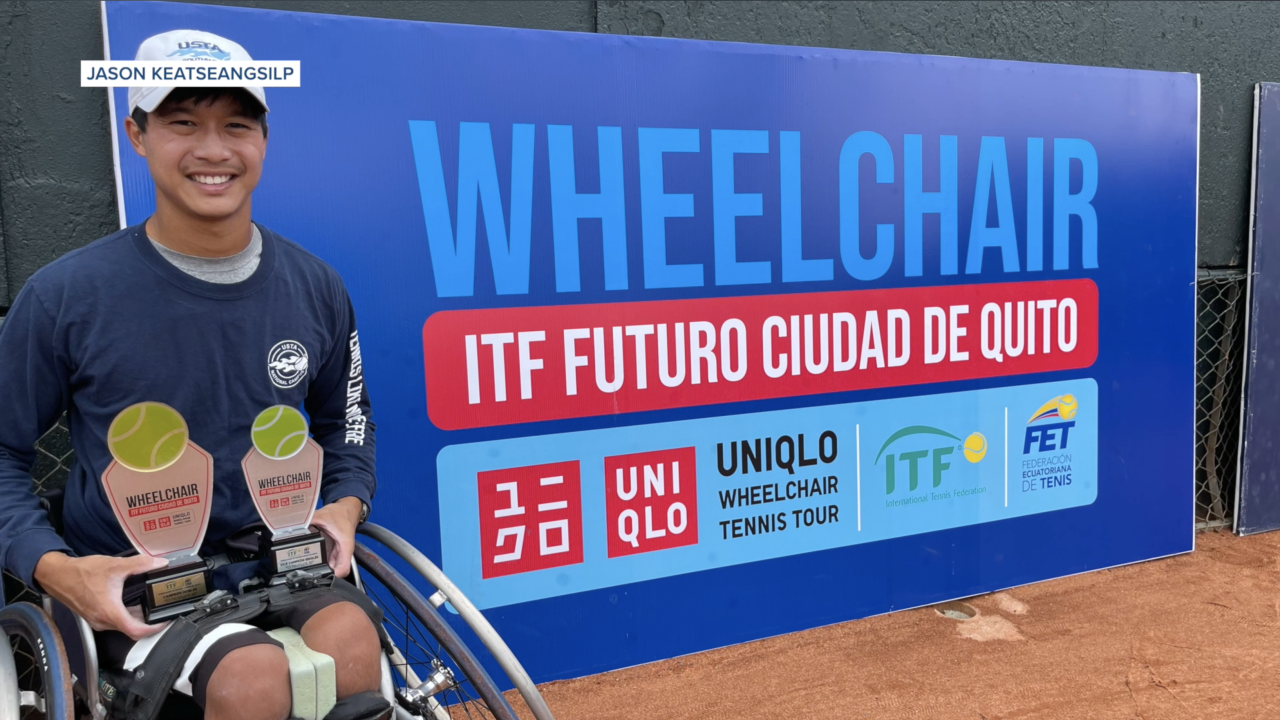Jason Keatseangsilp’s journey to the U.S. Open is one full of twists and turns.
“I did not even think a Grand Slam was in question, but now, here we are. So, it really is a dream turned into reality,” tennis player Jason Keatseangsilp said.
We caught up with Keatseangsilp the week before he headed out to the U.S. Open.
“This is a lifetime opportunity,” he said.
He applied for the wild card spot, and days later he received a phone call.
“I got the call from the tournament director saying I got the spot,” he said.
How Keatseangsilp got to this point is its own journey. After playing competitive tennis for much of his teenage years, at 17, he was in an accident that led to a spinal cord injury.
“I was a senior in high school. I was practicing rappelling and I fell off the climbing pole. It was a 40-foot fall,” he explained.
The pain he developed months after put life on hold.
“It was like a sharp, stabbing, fiery, electrical sensation kind of pain,” Keatseangsilp said.
“When I first met him he could barely speak to me because he was constantly doubled over in pain,” Dr. Scott Falci, a neurosurgeon and the founder and director of the Falci Institute for Spinal Cord Injuries at Swedish Medical Center, said. “The spinal cord can progressively deteriorate over time.”
Dr. Falci, who specializes in surgeries on chronically injured spinal cords, was able to help Keatseangsilp with a specialized surgery.
“These processing nerve cells inside the spinal cord can go awry after a spinal cord injury. They can actually start firing spontaneously like a seizure. It's almost like epilepsy of the spinal cord,” Dr. Falci explained.
Doctors are able to record the electrical activity, see it, and destroy those areas with radiofrequency heat.
“As soon as I woke up, I knew I was almost completely pain-free,” Keatseangsilp said.
That was back in 2013. Now, Keatseangsilp is back on the court.
“Within the past year, I've played about 15 tournaments,” he said.
Next up is the U.S. Open wheelchair championships, which expanded this year.
“The 2022 year is very special for the U.S. Open because they increased the draw, the bracket size, from 8 men to 16 men,” Keatseangsilp said. “It really opens the door for more players to kind of have a tangible goal.”
“Wheelchair tennis, wheelchair golf, wheelchair rugby, basketball,” Dane Stair, an adaptive rehab specialist at NeuAbility, said. “There's more and more of it being broadcast nowadays because accessibility is being put more to the forefront of thought.”
Stair is an adaptive rehab specialist at NeuAbility, a rehabilitative wellness center and gym. He works with those who have spinal cord injuries and advocates for more exposure and education in this realm at the university level.
“Finding adaptive sports, adaptive gyms, adaptive anything that takes a group of individuals who have been disabled, brings them together and helps them focus on a formal goal, hopefully, sports, works great for everybody,” Stair said. “As the individual is trying to learn how to live again they have to find different ways to solidify their identity down.”
Keatseangsilp hopes his story and how he found his passion for tennis again after his accident will help inspire others as well.
“[Dr. Falci’s] surgery changed my entire life,” Keatseangsilp said. ”Once people know about wheelchair tennis and they see it in action they get excited to watch.”




